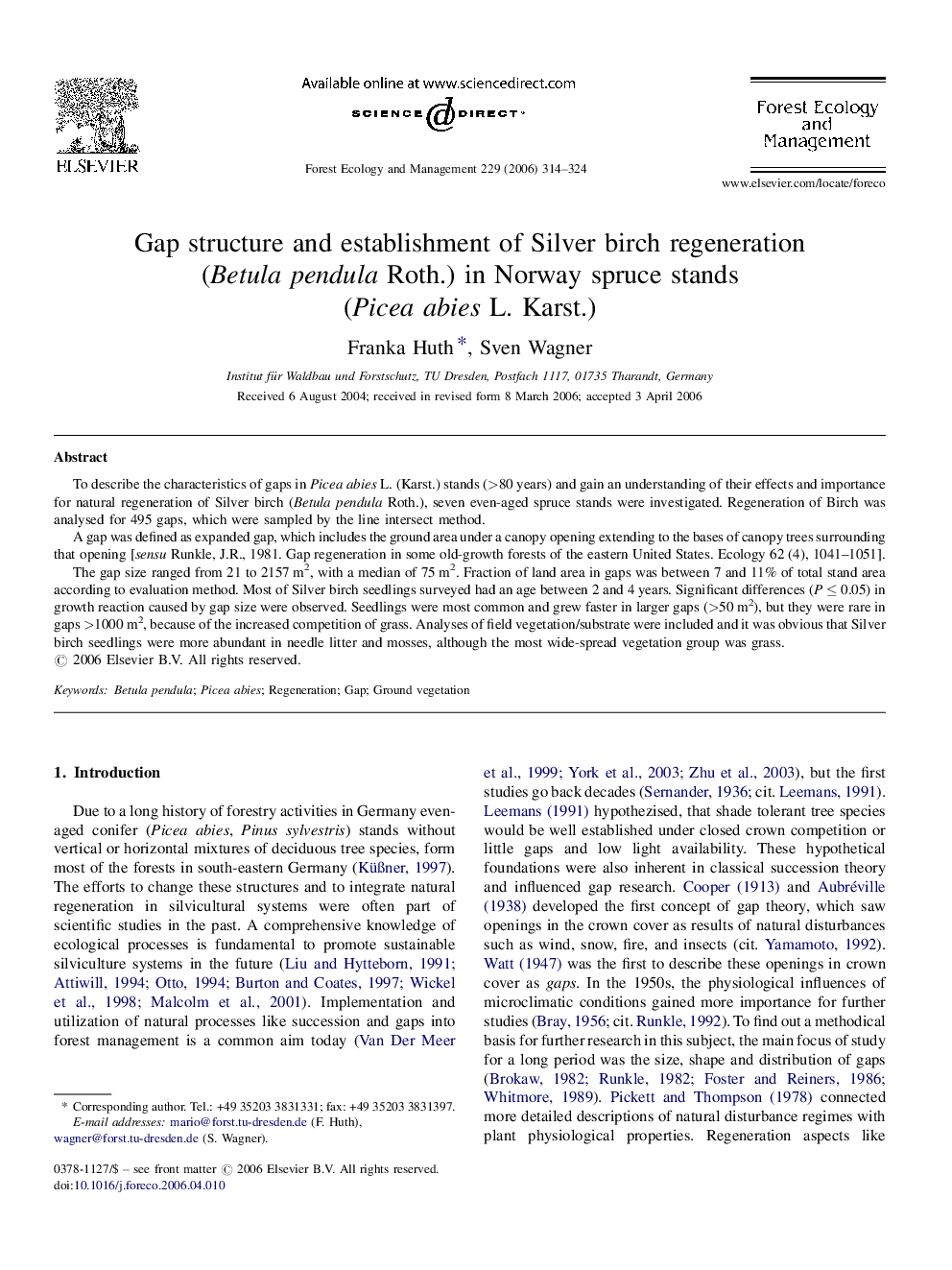| Article ID | Journal | Published Year | Pages | File Type |
|---|---|---|---|---|
| 90849 | Forest Ecology and Management | 2006 | 11 Pages |
To describe the characteristics of gaps in Picea abies L. (Karst.) stands (>80 years) and gain an understanding of their effects and importance for natural regeneration of Silver birch (Betula pendula Roth.), seven even-aged spruce stands were investigated. Regeneration of Birch was analysed for 495 gaps, which were sampled by the line intersect method.A gap was defined as expanded gap, which includes the ground area under a canopy opening extending to the bases of canopy trees surrounding that opening [sensu Runkle, J.R., 1981. Gap regeneration in some old-growth forests of the eastern United States. Ecology 62 (4), 1041–1051].The gap size ranged from 21 to 2157 m2, with a median of 75 m2. Fraction of land area in gaps was between 7 and 11% of total stand area according to evaluation method. Most of Silver birch seedlings surveyed had an age between 2 and 4 years. Significant differences (P ≤ 0.05) in growth reaction caused by gap size were observed. Seedlings were most common and grew faster in larger gaps (>50 m2), but they were rare in gaps >1000 m2, because of the increased competition of grass. Analyses of field vegetation/substrate were included and it was obvious that Silver birch seedlings were more abundant in needle litter and mosses, although the most wide-spread vegetation group was grass.
